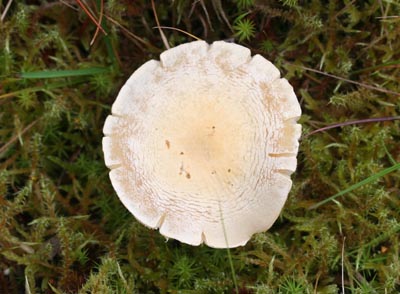Light showers.
Two extreme colour forms of the Common Carder Bumblebee - Bombus pascuorum. These are now getting very sluggish and I'm finding corpses on some flowers.


The brightly-coloured specimen will be a recent (and late) emerger. Note that neither specimen is gathering pollen - a sure sign that the hive is finished.
Both purple and blue forms of Heath Milkwort grow side by side on this rarely-used path through the clear-felled forestry.



A fine Ichneumonid with a brilliant ruby-red abdomen. I've often wondered if the white bands on the antennae are for signalling, but I recently saw an image where the antennae are sharply bent at the band. Maybe a mechanism to get the antennae to difficult-to-reach places.
The larva of the Fox Moth - Macrothylacia rubi. It feeds on Heather, Bramble and Willow around here.


One of those fungi that you stare at for a little while before the identification jumps out at you. Cystoderma amianthinum.

This looks to be a very young specimen of the Orange Peel Fungus - Aleuria aurantia. Only about 6mm across.

I found this Suillus specimen badly-eaten by fly larvae. I thought it might have been Suillus flavidus from the pale outer cap, but it was too far gone to tell.
A few metres away, however, I found 3 specimens of Suillus flavidus growing through moss under Pine. This is a new location for this rare fungus, and is about 1500m. away from the site of the first Irish discovery in 2005. Note the large angular pores, the thin jelly ring and the pale cap.



A mycena with signs of drying. A lot of fungi are struggling with lack of moisture this year.